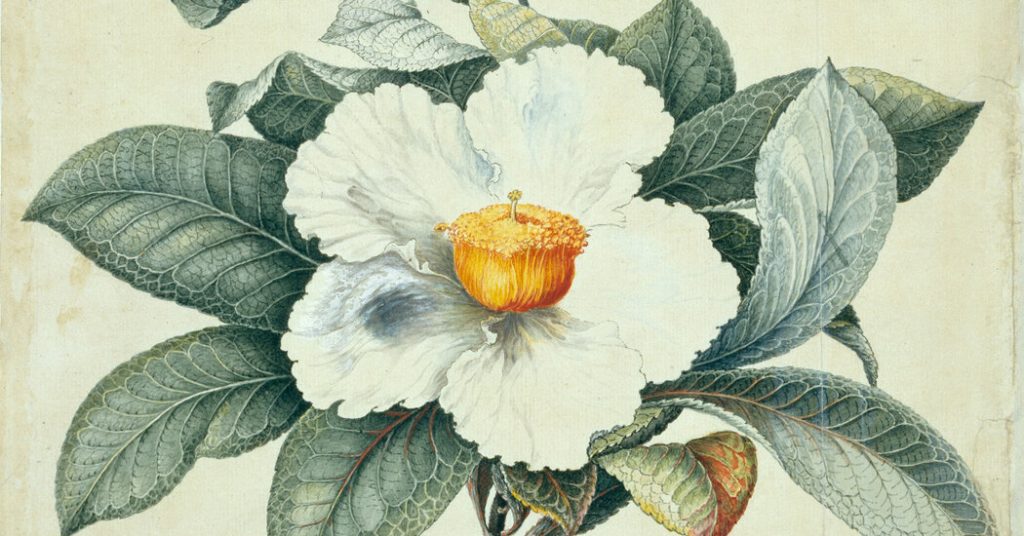How Many Plants Have We Wiped Out? Here Are 5 Extinction Stories
6 min read
It is not easy to say that nearly anything has truly “gone extinct.”
For starters, an untold range of creatures — specially teensy, nocturnal or usually cryptic types — have vanished prior to human beings ever found them.
The moment biologists suspect a documented species’ extinction, the obstacle shifts to proving whether or not it has disappeared endlessly, or just disappeared from sight.
Even when experts are 99 % particular a thing is absent, they may possibly never know whether pathogens, habitat disturbance, invasive species, weather improve or some other power drove them out of existence.
“There’s a perception that we have bought it down — that we know our flora and we know what is extinct,” said Anne Frances, the direct botanist for NatureServe, which encourages wildlife conservation. That belief couldn’t be even more from the truth, she said.
In a review published in August in Conservation Biology, Dr. Frances and 15 other scientists from across the United States quantified how quite a few trees, shrubs, herbs and flowering plants have vanished from North The united states considering that European settlement. Soon after compiling current information and facts on presumed extinct species and doing the job with area botanists to vet the information, the team narrowed down a listing of 65 plant species, subspecies and versions that have been misplaced for good in the wild.
That figure is pretty much surely an underestimate, said Wes Knapp, a botanist at the North Carolina Organic Heritage Program and a co-writer of the analyze.
“That 65 is not rock stable,” he mentioned. “We’re continue to documenting what’s on the floor, and you can never ever genuinely confirm a speculation like ‘extinct.’”
Just after all, researchers rediscover extinct species all the time, as nicely as uncover mystery extinctions concealed in pure historical past museum collections.
“Humans like to set items into neat groups, but character does not present alone that way,” Dr. Frances mentioned. “Every plant on this listing is its own small thriller.”
Inspite of the actuality that it is extinct, you could fairly undertaking on Franklinia alatamaha.
Considered “extinct in the wild,” the Franklinia tree — alongside with six other crops detailed in the modern examine — now exists only in cultivated areas this kind of as arboretums or botanical gardens.
John Bartram, King George III’s botanist in the Americas, and his son William initial explained the species (and named it for spouse and children good friend Benjamin Franklin) just after stumbling on the unfamiliar tree together Georgia’s Altamaha River in 1765.
In a blessed twist, the youthful Mr. Bartram returned a handful of many years later to gather seeds and cuttings, and brought them to Philadelphia where by the 1st cultivated Franklinia tree bloomed in 1781. In a quarter-century, in 1803, the species was noticed in the wild for the past time.
Currently, any Franklinia trees you might come upon in cemeteries, gardens and parks are descendants of Mr. Bartram’s cultivations. “It was not meant to reduce extinction,” Mr. Knapp said, “but it did.”
It’s unclear how the tree disappeared, nevertheless some have suggested a soil-borne cotton pathogen, above-assortment by nurseries or a alter in regional fireplace frequency could have performed a job in its demise.
“What we have is conjecture. We definitely have no plan why it’s long gone,” Mr. Knapp reported. “But you can get it if you go to the suitable place.”
Big-flowered Barbara’s-buttons
How do you reduce a 3-foot-tall daisy without end? By mistaking it for a different flower.
At least, that is what happened to Marshallia grandiflora, a substantial flowering plant previous collected in 1919.
Native to two western counties in North Carolina, the species was, till this yr, improperly lumped in with a different, extra wide-ranging daisy.
In evaluating latest Marshallias with more mature herbarium specimens, a trio of botanists seen a remarkable size and form change.
By the time it was initial described in June, the “new” species was lengthy extinct, for explanations that are not recognised. Three other extinct vegetation shown in the new paper were also likewise learned in normal background collections in just the previous 25 yrs.
“We’re however executing the standard science to untangle what the species are,” reported Alan Weakley, director of the University of North Carolina, Chapel Hill’s Herbarium, and a co-author of the review. “There are definitely much more undescribed extinct species sitting in herbaria, collected 100 many years in the past.”
Compact Solomon’s Seals Variety
Native People in america historically ate the young stems of Solomon’s seals, a wildflower belonging to the identical household as asparagus, or cooked their starchy roots into breads and soups. Today, the species continues to be utilised in organic medication.
Even though most of little Solomon’s seal is doing just fantastic in the wild, 1 of its varieties, Polygonatum biflorum var. melleum, is presumed extinct.
Researchers are split on regardless of whether the melleum wide variety, past collected in 1930 and believed to be native to Michigan and Ontario, is distinctive enough to be classified aside from other Solomon’s seals.
“It’s seriously murky. The facts argues it may well or may perhaps not even be actual,” Mr. Knapp explained. “This is on the fringe.”
While the melleum wide variety manufactured the minimize for August’s paper, uncertainty in excess of the existence or status of hundreds of crops remaining them off the checklist in their examine.
Thismia
In 1912, Norma Etta Pfeiffer, a 24-calendar year-previous graduate university student at the University of Chicago, made a great botanical discovery in close proximity to Chicago’s Lake Calumet: a certainly teensy plant adorned with bead-sized flowers.
The plant, which she named Thismia Americana, belongs to a scarce genus that lives as a parasite on subterranean fungi, stealing their electrical power instead of converting sunlight through photosynthesis.
“They’re little and cryptic and mostly underground. We don’t even know considerably about the ones we’ve explained,” mentioned Paul Marcum, a botanist at the Illinois Purely natural Historical past Survey.
Like just about two out of 3 of the crops outlined in August’s examine, Thismia Americana is only ever recognized to have existed in just one locale, building it extremely vulnerable to any variations in land use.
Shortly after Dr. Pfeiffer observed the centimeter-tall plant, industrial advancement wrecked the discovery website.
That hasn’t stored subsequent generations of Chicagoans from searching for it — despite the fact that Area guides for Thismia seekers offer small assistance: “Where to glimpse: Honestly? Your guess is as excellent as ours.” The species has not been noticed considering that 1916.
“It’s the holy grail,” Mr. Marcum explained. “I still believe that it could be out there. I feel somebody will be on their arms and knees exploring in the soil, and get blessed.”
Franciscan Manzanita
The Franciscan Manzanita has endured not a person, but various brushes with extinction.
The shrub species, Arctostaphylos franciscana, was presumed to be extinct in the wild for just about 70 a long time, stamped out by building in San Francisco’s Presidio park.
Then, in 2009, Daniel Gluesenkamp, now the government director of the California Native Plant Culture, stumbled upon Franciscan Manzanita in overgrown vegetation around the Golden Gate Bridge.
Sad to say, the web-site of its rediscovery lay straight in the path of a “shovel ready” task. “The next very best thing we could do was dig this issue up and shift it,” Mr. Knapp claimed.
Conservationists relocated the shrub to a safeguarded site and it started propagating. Like the Franklinia tree, the Franciscan Manzanita is now regarded as extinct in the wild.
“Part of me is sad that we couldn’t let it to exist in its very last remaining pure location,” Mr. Knapp mentioned. “It’s not a excellent solution, but it’s a great deal much better than staying extinct.”



